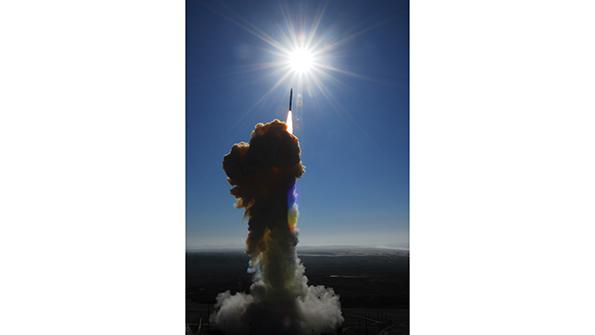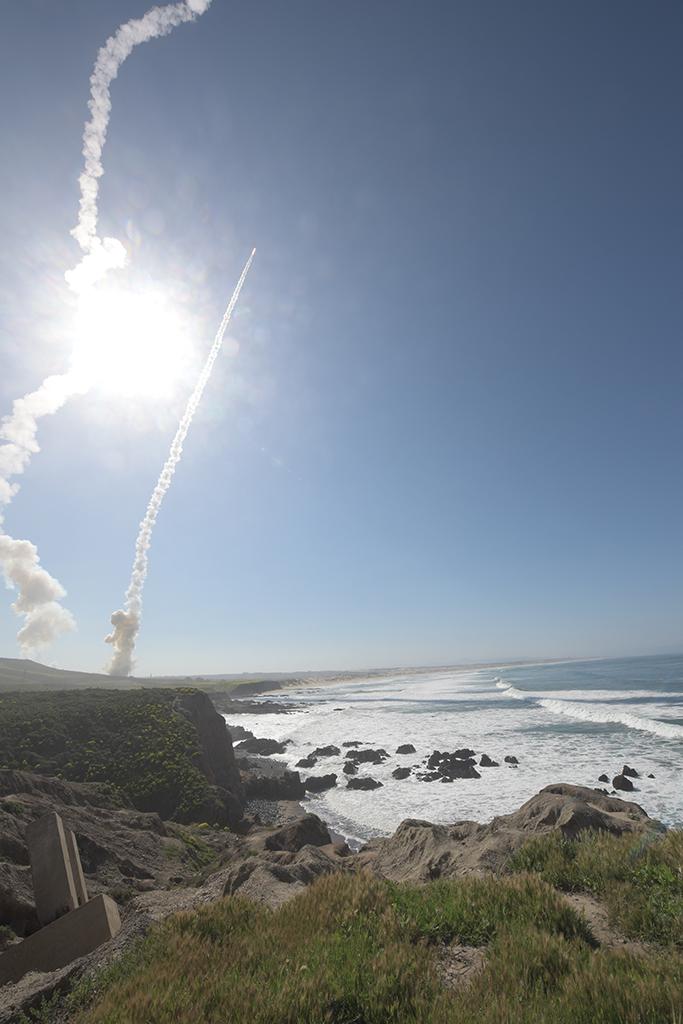
The same week that North Korea launched a set of ballistic missile tests in response to U.S. military exercises with South Korea, the U.S. officially kick-started a program to modernize its homeland missile defense system.
On March 23, the Missile Defense Agency (MDA) awarded Lockheed Martin a contract of up to $3.6 billion through August 2025 and Northrop Grumman a contract of up to $3.9 billion through May 2026 to develop and test Next-Generation Interceptors (NGI) before a final downselect decision. The contracts officially ousted Boeing from the three-way competition.
- MDA invests in two teams to reduce programmatic risk
- Boeing might file a bid protest with the Government Accountability Office
The decision to proceed with the contract awards is a clear signal the Pentagon is prioritizing the homeland defense mission. The downselect was expected in late 2020 but was delayed until the Biden administration could review the program.
The Pentagon plans to supplement its existing Ground-Based Interceptors with an all-up-round boost vehicle and kill-vehicle system designed to survive natural and hostile environments. The program’s clean-sheet design is a departure. The Pentagon announced in August 2019 that the U.S. would build a new NGI after terminating the Raytheon Redesigned Kill Vehicle (RKV) program, designed to upgrade existing Boeing Ground-Based Interceptors, because of schedule delays, cost overruns and the inability to target multiple objects.

“NGI is the result of the first holistic technical assessment of homeland defenses the department has conducted since the initial system operations began in 2004,” says MDA Director Vice Adm. Jon Hill. “By planning to carry two vendors through technology development, MDA will maximize the benefits of competition to deliver the most effective and reliable homeland defense missile to the warfighter as soon as possible.”
The plan is to inject competition through the program’s critical design review phase.
“Our proposal to upgrade the current Ground-Based Midcourse Defense (GMD) system leveraged the company’s 60-plus years of experience with missile and weapon systems to deliver an NGI solution that emphasized an innovative design with enhanced flexibility and modularity,” Boeing said in a statement.
Boeing did not rule out the possibility of filing a bid protest with the Government Accountability Office. The action would force the MDA to stop work on the NGI until an investigation is complete, but Boeing said the MDA’s decision does not affect the company’s commitment to the current GMD system.
Both analysts and industry officials admit the competition is necessary because of the aggressive program schedule. There is interest in getting the technology fielded early, but the current plan is for the NGI to become operational by 2030. The MDA plans to test the NGI in the mid-2020s, but industry proposals will determine the final schedule.
Tom Karako, senior fellow and international security program director for the missile defense project at the Center for Strategic and International Studies, agrees that the MDA is approaching the NGI in a new way by injecting competition throughout the critical design review.
“[The program is fulfilling] a validated requirement from the [Joint Requirements Oversight Council]; the need for this came from the highest levels, and frankly, a more traditional acquisition process,” Karako tells Aviation Week. “It’s a very conservative approach to make sure that this is a capable and reliable program of record by really introducing a lot of competition and sustaining competition for a good bit of time through the process.”
Sarah Reeves, NGI program vice president at Lockheed Martin, says the competition will drive innovation across the industrial base. Lockheed is working with Aerojet Rocketdyne to manufacture the booster.
Lockheed Martin announced in December that it had entered into a definitive agreement to acquire Aerojet. Reeves tells Aviation Week that the acquisition would provide the NGI program with “more synergy and more agility, and [enable] us to be able to bring this capability faster.”
Lockheed Martin will use its $580 million investment in multi-object kill vehicle technology and the hit-to-kill technology from the Terminal High-Altitude Area Defense program to inform its NGI bid, says Reeves.
Separately, the Northrop Grumman-Raytheon Technologies team is taking a unique approach for the NGI competition. Instead of the traditional prime contractor/subcontractor roles, their teams are fully integrated—even though Northrop is the prime and Raytheon is serving as a subcontractor. For example, Terry Feehan, NGI vice president and program director at Northrop Grumman, is the lead, while Melissa Morrison-Ellis, NGI deputy program director at Raytheon Missiles and Defense, will serve as deputy. The same goes for the chief engineer and deputy chief engineer, Feehan and Morrison-Ellis tell Aviation Week.
Raytheon will use work from the RKV such as algorithm advancement to inform the design of its NGI payload, Morrison-Ellis says.
Northrop Grumman will provide the booster, and Raytheon is responsible for the payload.





